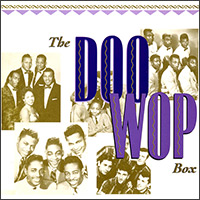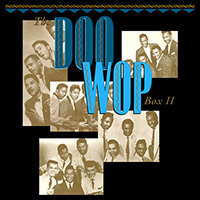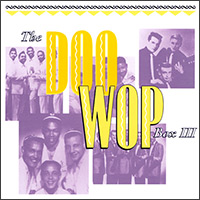
Doo Wop Christmas
various artists
Support www.hipchristmas.com! ![]() Shop at
Amazon,
Apple Music, and more...
Shop at
Amazon,
Apple Music, and more...
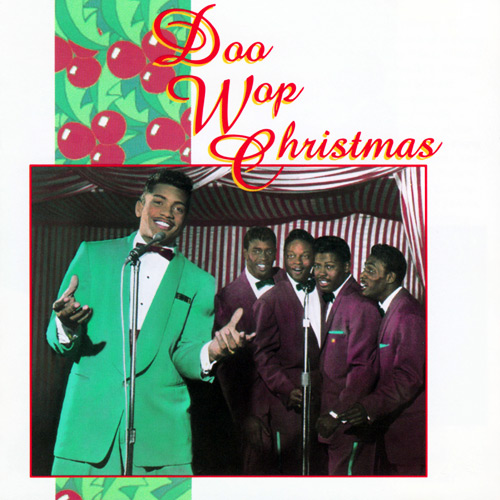 There
was no form of rock 'n' roll purer than doo wop, and Rhino Records' Doo
Wop Christmas (1992) taps into an even more rarefied vein of that gold. At the height of the CD era, Rhino compiled about two dozen marvelous compilations documenting holiday music in a dizzying variety of genres including country, jazz, blues, reggae, punk, new wave, and swing (learn more). Doo
Wop Christmas was one of the best, and it was a shoo-in for my Top 20 Albums list.
There
was no form of rock 'n' roll purer than doo wop, and Rhino Records' Doo
Wop Christmas (1992) taps into an even more rarefied vein of that gold. At the height of the CD era, Rhino compiled about two dozen marvelous compilations documenting holiday music in a dizzying variety of genres including country, jazz, blues, reggae, punk, new wave, and swing (learn more). Doo
Wop Christmas was one of the best, and it was a shoo-in for my Top 20 Albums list.
Essentially a hopped-up, street-level version of a vocal group tradition extant in Black culture for many years (Mills Brothers, Ink Spots), doo wop developed in the late 40's and early 50's and was primarily sung a cappella by young amateurs - always on street corners, according to popular wisdom. Most doo wop recordings were simply studio recordings of those groups with instrumental backing added. It was performed - more than most rock music, at least - purely for the joy of it (and to impress girls, of course), and it's the closest thing rock n' roll has to sacrament. When doo wop crossed paths with the similarly pure world of Christmas music, good things were bound to happen.
One of those things - the Drifters' interpretation of Bing Crosby's 1942 Christmas classic, "White Christmas" - is one of the greatest vocal performances in the history of rock 'n' roll, and it sits near the top of my Top 100 Songs list. It is a shining example of doo wop singing and a joyously festive holiday song, and yet it transcends both the genre and the season. The Drifters' amicable, ambling arrangement mimics an earlier recording by the Ravens (read more), and bassist Bill Pinkney begins the song with his best imitation of Der Bingle. It almost sounds comic. But, when tenor Clyde McPhatter makes his startling entrance, singing essentially the same notes as Pinkney, we are witness to a mesmerizing moment of utter originality. It's a legendary, unmatched performance. Elvis Presley's 1957 attempt to duplicate McPhatter's singing sounds positively emasculated in comparison - and that's saying something!
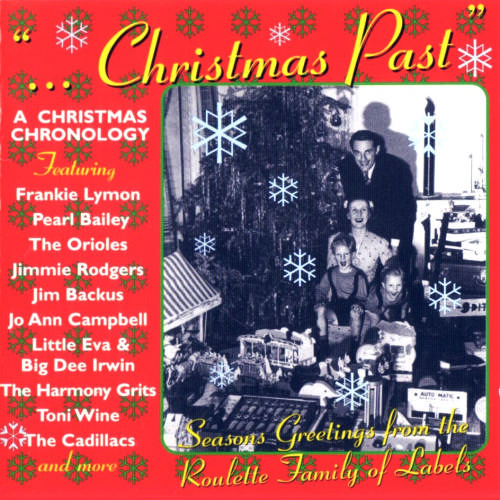 Personally, I Would've Gone With "Sh-Boom"
Personally, I Would've Gone With "Sh-Boom"
When doo wop was in its prime, nobody called it doo wop. The name got coined by rock critics at some point based on two of the more common nonsense syllables that the vocal groups would sing in the background while the lead singer - usually a tenor, similar to gospel groups like the Soul Stirrers - held court in the foreground. As Barry Hansen (aka Dr. Demento) once noted, we could have just as easily called the stuff "oodly-pop-a-cow pop-a-cow pop-a-cow cow," a phrase once sung by Frankie Lymon & The Teenagers, one of the leading doo wop groups.
Finely-tuned, quasi-polyphonic vocal gymnastics were the common thread of doo wop. After that, all bets were off. Doo wop ran the gamut from hushed, reverent odes like "In The Still Of The Nite" (The Five Satins, 1956) to loping, jubilant paeans like "Sh-Boom (Life Could Be A Dream)" (The Chords, 1954) to chaotic, cacophonous breakdowns like "Blue Moon" (The Marcels, 1961). Doo Wop Christmas runs that gamut, too, within the realm of holiday music.
Some of the songs on Doo Wop Christmas, such as the Orioles "(It's Gonna Be A) Lonely Christmas" (1948) and the Moonglows' "Just A Lonely Christmas," (1953) are typical of the quiet, sublime, strangely destitute sound that makes doo wop fans such a devoted bunch. Others, such as the Penguins' "Jingle Jangle" (1955) and the Shells' "(It's A) Happy Holiday," (1962) are unrestrained, happy mayhem. However, a few pursue the middle ground, and they are the tracks that most resemble traditional pop music. The Falcons' "Can This Be Christmas" (1957), for instance, almost sounds like a Tin Pan Alley love ballad, though it's played and sung with more guts and soul than anything that ever emerged out of that storied songwriter's sweatshop.
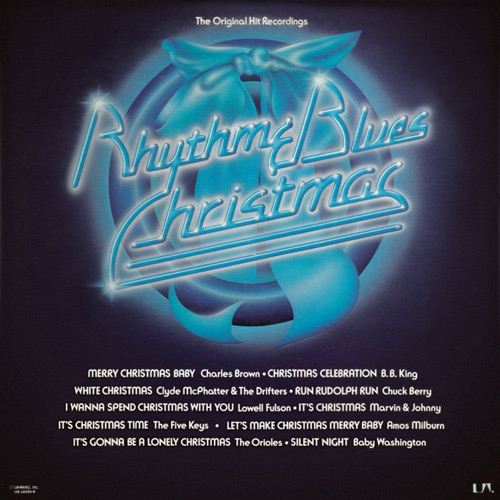 Down the Falcons Rabbit hole
Down the Falcons Rabbit hole
Apropos of very little, the Falcons were a young group from Detroit who are, musically speaking, best remembered for the top-tier doo wop classic "You're So Fine" (1959). But, the individual members would go on to even bigger stuff. The group that recorded "Can This Be Christmas" and "You're So Fine" included Joe Stubbs, Eddie Floyd, and Mack Rice. Stubbs joined the Contours, who recorded one of Motown's greatest hits, "Do You Love Me" (1962) - and he was the brother of Levi Stubbs, the Four Tops' magnificent lead singer. Eddie Floyd would record many hits for Stax Records, including "Knock In Wood" (1966). Mack Rice also recorded for Stax, but his greatest contribution was as a songwriter. His name appears in the credits on records as legendary as the Staple Singers' "Respect Yourself," Rufus Thomas' "Sophisticated Sissy," Johnnie Taylor's "Cheaper to Keep Her," and Wilson Pickett's "Mustang Sally." And, speaking of the Wicked Pickett, he was also a member of the Falcons, but he didn't join until 1960 - five years before his "In The Midnight Hour" topped the R&B charts.
More apropos to our discussion, there would be a fair amount of Christmas music in the Falcons' future. Eddie Floyd recorded a single called "I'll Be Home For Christmas" (not the famous song of the same name) for a little label Safice in 1963, and he put the original 1957 recording of "Can This Be Christmas" (on which he sang lead) on the flipside, this time under his own name. Safice was owned by Al Bell and would soon be distributed by Stax, which eventually brought both Floyd and Bell to the label - the former as an artist and the latter as an executive, songwriter, producer, and, eventually, co-owner. In 1976, Eddie Floyd recorded another single, "Special Christmas Day," for Malaco Records, and in 2012, he waxed a whole album, I'll Be Your Santa. Eddie sounded very long in the tooth by that point, but he gave it his best shot. It's an all-original album, by the way, and it includes a song called (wait for it) "Doo Wop Christmas."
Mack Rice, meanwhile, wrote one of the greatest (and horniest) Christmas songs of all time, "Santa Claus Wants Some Loving," which Albert King recorded for Stax in 1974. Rice also recorded a version of the song, presumably before King recorded his, but it wouldn't be released until the 1982 Stax compilation It's Christmas Time Again - which also includes King's version.
Wilson Pickett recorded for Atlantic Records during the years when they created the phenomenal album, Soul Christmas (1968). But, he wouldn't record any holiday music of his own until 1982, when he waxed two tracks for Christmas Soul Special. The album presented six soul legends performing traditional holiday favorites arranged in the classic Memphis style. It worked better in theory than practice, but Pickett's contributions are clear highlights.
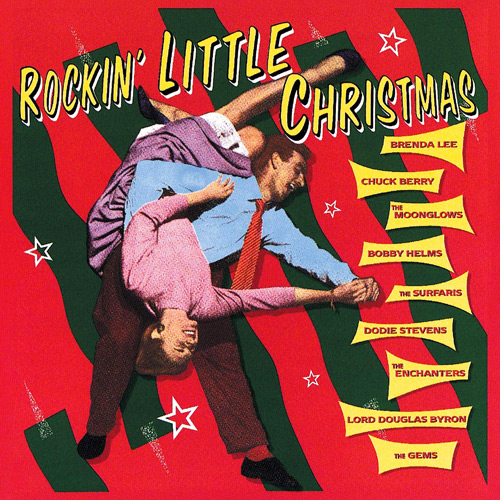 The Lighter Side of Doo Wop
The Lighter Side of Doo Wop
I have one last Doo Wop Christmas highlight to mention, and it's notable for a couple of reasons. First, the Statues' "White Christmas" (1960) is a great performance of a really striking arrangement - one that couldn't be more different from Bing Crosby's original or the Drifters' cover mentioned above. Second, it gives me an opportunity to point out that doo wop was not an entirely Black art form. White kids quickly picked up on it, and quite a few White (or integrated) vocal groups had memorable doo wop hits including the Crests ("Sixteen Candles," 1958), the Mystics ("Hushabye," 1959), and the Diamonds ("Little Darlin'," 1957). And, of course, Dion & The Belmonts and Frankie Valli & The Four Seasons became two of the biggest acts in the early days of rock, and both could trace their roots back to the street corner.
The Statues, meanwhile, were a trio of clean-cut White kids from Nashville, and their "White Christmas" incorporates both White and Black vocal traditions. In the Statues polished recording, you can hear the unmistakable sound of Black groups like the Cleftones or the Flamingos. But, you also hear the stylings of (very) White vocal groups like the Four Freshmen or the Hi-Lo's - all supported by a gently plonking rock band that sounds a little quaint, even by 1960 standards. Interestingly, the Statues' lead singer James "Buzz" Cason went on to play with surf 'n' drag band Ronny & The Daytonas, who scored a big hit with "G.T.O." in 1964. He also had great success as a songwriter, often working with Bobby Russell. Among Cason's many credits are "Soldier Of Love" (Arthur Alexander, 1962), "Popsicle" (Jan & Dean, 1966), and "Everlasting Love" (Robert Knight, 1967).
Anyway, not counting a few revival songs (more on that in a moment), Doo Wop Christmas stops in 1963, by which time doo wop was running on fumes. The following year, the British Invasion changed everything, but the doo wop aesthetic would be incorporated into soul music and echo through the decades in vocal groups like the Spinners, New Edition, and Tony! Toni! Toné!
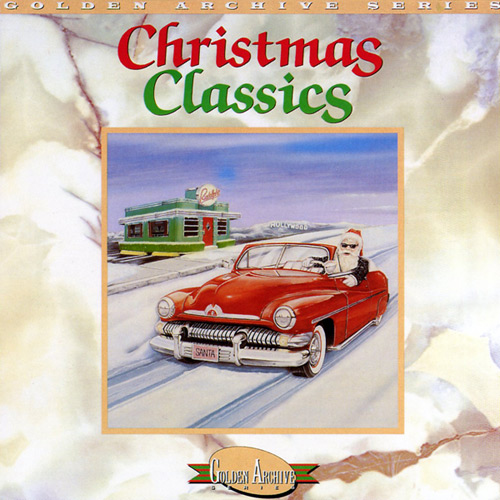 Not So Fast, Speedoo
Not So Fast, Speedoo
Like most Rhino holiday compilations, Doo Wop Christmas drops in a few latter-day tracks, presumably to prove that the genre is still relevant. Doo wop, in fact, still has diehard enthusiasts, and groups are still practicing the craft. But, that doesn't mean they measure up to the masters. Here, Rhino spotlights one new group, the Echelons, and two minor groups from back in the day: the Tune Weavers, best remembered for "Happy, Happy Birthday Baby" (1957), and the Skyliners, whose big hit was "Since I Don't Have You." None of their contributions - all recorded in the years just before Doo Wop Christmas was compiled - stand up to the classics. They sound comparatively wan, slick, and synthesized, and Rhino ends up disproving their own point. Doo wop was a magical moment in music history, and recapturing that magic is a quixotic quest - an impossible dream, if you will.
Less egregious, but worth noting, is that Frankie Lymon's "It's Christmas Once Again" (1957) doesn't quite live up to its billing, and it's almost entirely out of place. True, it's an impressive vocal performance - better than Tommy Edwards' 1951 original, for sure - and the song fits Lymon's legendary pipes like a glove. But, "It's Christmas Once Again" is a slick, easy listening ballad clearly signaling that Frankie - then only 15 years - was making a bid for the "adult" market. Moreover, it was recorded solo after the Teenagers had broken up. The record has a few whitebread background singers, but none of the complex vocal interplay that gives doo wop its unique magic. So, it's not rock 'n' roll, it's barely rhythm 'n' blues, and - formally speaking - it's not doo wop.
So, why does "It's Christmas Once Again" appear on Doo Wop Christmas? Well, drawing power, obviously. Doo wop didn't have a lot of stars. Hell, most of the artists didn't have anything resembling a career - just a handful of singles, then obscurity. Frankie Lymon, however, was a bona fide teen idol, and the Teenagers were a top-of-the-bill-act. "It's Christmas Once Again" is the only holiday record with either name on the label, even if it was just a b-side (Roulette 4035, "Little Girl"). So, Rhino's choice was mercenary - but understandable.
The Bottom Line
But, pish posh, the remaining 14 tracks are pure doo wop - and wonderful. A few of the songs on Doo Wop Christmas are among the best rock 'n' roll ever recorded, and all of the others are among the hippest Christmas music ever made. Unfortunately, like all of the great Rhino compact disc compilations, Doo Wop Christmas is long out-of-print, and it never made the leap to the world of downloads and streaming. CD copies aren't too scarce, however - try Amazon or Discogs - and most of the songs can be found on other sources. But, be aware that most of the copyrights now fall under the looser European public domain standards, meaning almost any idiot can upload them to your favorite streamer. So, caveat emptor.
Still, at 18 tracks Doo Wop Christmas just skims the surface. There are lots of doo wop Christmas albums on the market, most of which focus on very obscure records, or they're in the public domain, or both. Many more focus on more recent doo wop revivial acts, which is something only hardcore collectors will appreciate. Proceed with caution. Instead, for your next steps I recommend the other albums pictured on this page - especially Christmas Past, an album examining the Roulette family of labels. It shares no less than seven tracks with Doo Wop Christmas, which tells you something. MCA's Rockin' Little Christmas , United Artists' Rhythm & Blues Christmas, and Rhino's Christmas Classics, Cool Yule, and Rockin' Christmas are also fine collections with a lot of doo wop.
Finally, it is certainly worth noting that the following year, Rhino began a series of staggering four-disc boxed sets that wrote the history of doo wop as definitively as anything before or since. The Doo Wop Box (1993), The Doo Wop Box II (1996), and The Doo Wop Box III (2000) are cornerstones of my collection. I didn't stop there - collecting doo wop is a lifetime sport - but the Rhino boxes include the cream of the crop and a whole lot more. [top of page]
 Albums
Albums
- Doo Wop Christmas (1992) Top 20 Album
 Essential Songs
Essential Songs
- After New Year's Eve (Heartbeats, 1957)
- Can This Be Christmas (Falcons, 1957)
- (It's A) Happy Holiday (Shells, 1962)
- It's Christmas Once Again (Frankie Lymon, 1957)
- It's Christmas Time (Five Keys, 1951) Top 100 Song
- (It's Gonna Be A) Lonely Christmas (Orioles, 1948) Top 100 Song
- Jingle Jangle (Penguins, 1955) Top 100 Song
- Just A Lonely Christmas (Moonglows, 1953)
- Merry Christmas Darling (Happy New Year, Too) (Uniques, 1963)
- Merry Twist-mas (Marcels, 1961)
- Rudolph The Red-Nosed Reindeer (Cadillacs, 1956)
- Santa Claus Is Coming to Town (Harmony Grits, 1959)
- What Are You Doing New Year's Eve (Orioles, 1949) Top 100 Song
- White Christmas (Drifters, 1954) Top 100 Song
- White Christmas (Statues, 1960)
 Further Listening
Further Listening
- The Best Of Cool Yule (various artists, 1988)
- Christmas Classics (various artists, 1988)
- Christmas Past: Season's Greetings From The Roulette Family Of Labels (various artists, 1998)
- Christmas With The Platters (The Platters, 1963)
- Hipsters' Holiday (various artists, 1989)
- Hot Rod Holiday (various artists, 1997)
- It's Christmas Time Again (various artists, 1982)
- Legends Of Christmas Past (various artists, 1992)
- The Rhino Christmas Compilations (various artists, 1984-2001)
- Rhythm & Blues Christmas (various artists, 1976)
- Rhythm & Blues Christmas (various artists, 1988)
- Rockin' Little Christmas (various artists, 1986)




